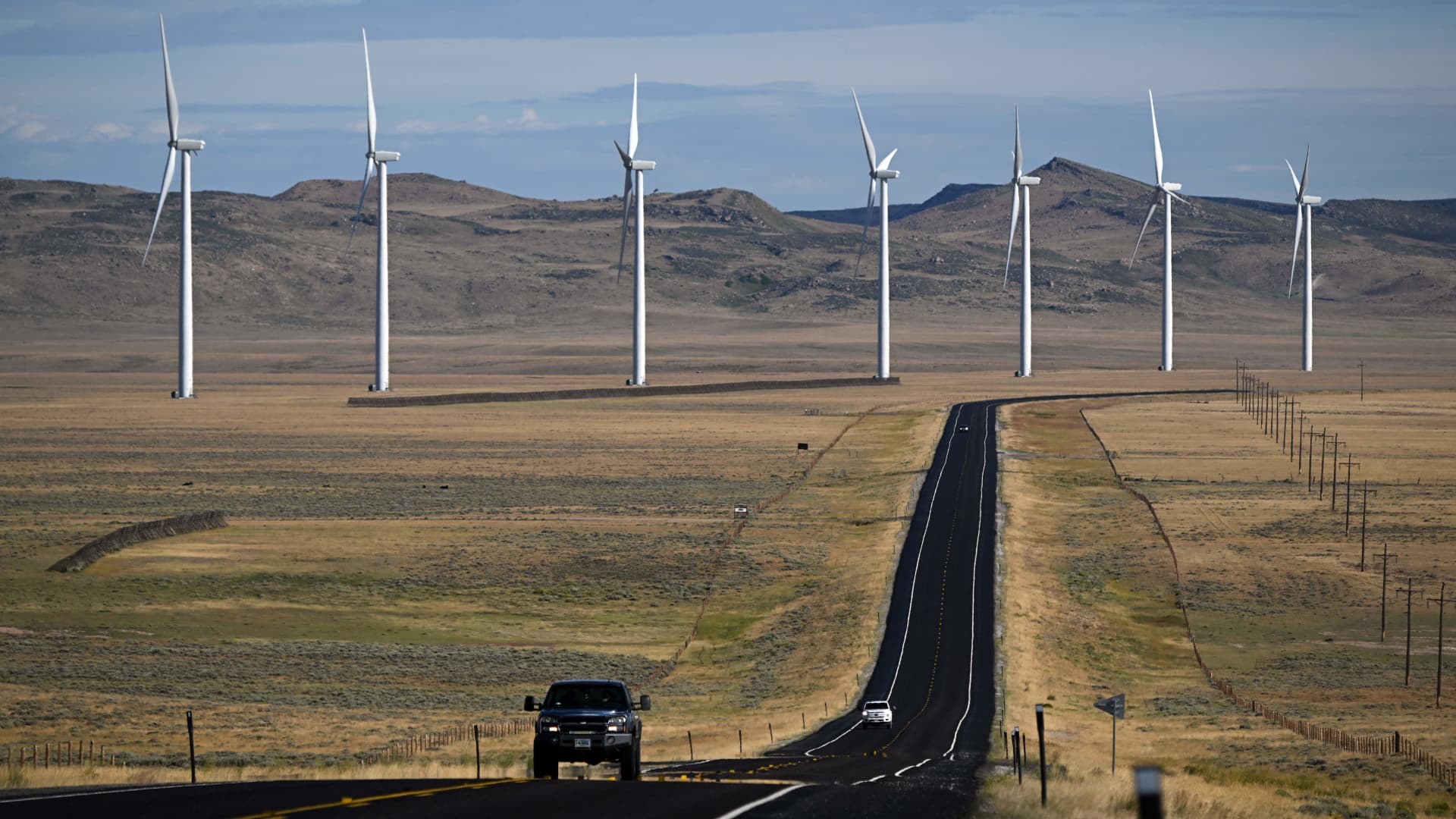Products You May Like
Federal agencies on Wednesday paved the way for state, city and local governments and other nonprofit entities to join the private sector in accessing the lucrative tax credits included in the Biden administration’s landmark climate bill.
The U.S. Department of the Treasury and Internal Revenue Service on Wednesday released guidance on what tax-exempt entities need to do to access the credits the provisions that were included in the Inflation Reduction Act, which President Joe Biden signed into law in August.
In the 10 months since the IRA passed, private sector companies have announced more than $107 billion in new clean energy investments, John Podesta, senior advisor to the president for clean energy innovation and implementation, said on a call with reporters on Tuesday.
Conventionally, states, territories, tribes, local governments and nonprofits have not been not eligible for tax credits, because they do not derive profits from which to deduct the value of a tax credit.
The IRA changed that.
“The Inflation Reduction Act’s biggest tools are tax credits, which provide an unprecedent 10 years of policy certainty for the clean energy sector,” Podesta said.
“For the first time, tax-exempt entities will be able to receive a payment equal to the full value of the tax credit for building qualifying clean energy projects,” Podesta said. “That’s a game-changer for our ability to spread the benefits of clean energy to every community in America.”
For example, the new guidance will enable schools to purchase electric buses, help schools retrofit and add rooftop solar to the roofs of their buildings, and help rural energy cooperatives invest in renewable energy.
“It will help nonprofit hospitals, houses of worship, nonprofit and charitable organizations, and more reduce their own energy use and save money so they can spend more on their mission,” Podesta said.
The Treasury and IRS also issued guidance on the specific application of another wonky-sounding but very important piece of the IRA — what’s called “transferability.”
In some cases, for-profit companies don’t pay enough of a tax bill to take the full advantage of a tax credit to which they would otherwise be eligible. Transferability allows those companies to sell their tax credit to a third party in order to get access to its full cash value.
Taken together, the two bits of guidance stand to grease the flywheel of climate tech investment already being spurred by the Inflation Reduction Act.
They “will dramatically speed deployment, bring many governments and nonprofits to the table for the first time, and make it easier for businesses at the cutting edge of clean energy to benefit from the credits,” Wally Adeyemo, deputy secretary of the Treasury, told reporters on Tuesday.
“Projects and manufacturing plants will be built more quickly and affordably because of these credits, and more communities would benefit from the growth of the clean energy economy,” Adeyemo told reporters.
Among other things, the new IRA rules will help the more than 900 rural electric cooperatives that deliver power to 32 million Americans in some of the most remote parts of the U.S., Adeyemo said.
The changes, in one example, will help the Baltimore chapter of City of Refuge, a faith-based nonprofit serving neighborhoods where nearly 40% of residents live below the federal poverty level, pay for its own solar and energy-storage system.
“The new direct pay option means that City of Refuge will own that project themselves, the full value of the solar tax credit will be paid directly to them,” said Michelle Moore, the CEO of Groundswell, a nonprofit that builds community-based power in Washington, D.C., Maryland, Illinois, Georgia and upstate New York.
“And the resulting long-term electricity bill savings means City of Refuge will have more money for the mission to support the health, food, housing and job-training programs they deliver to their neighbors in Baltimore,” Moore told reporters on Tuesday’s call.
This marks the first time tax-exempt entities have been able to take advantage of these kinds of tax provisions, so senior administration officials said they were not able to quantify exactly how much of an investment it will entail.
